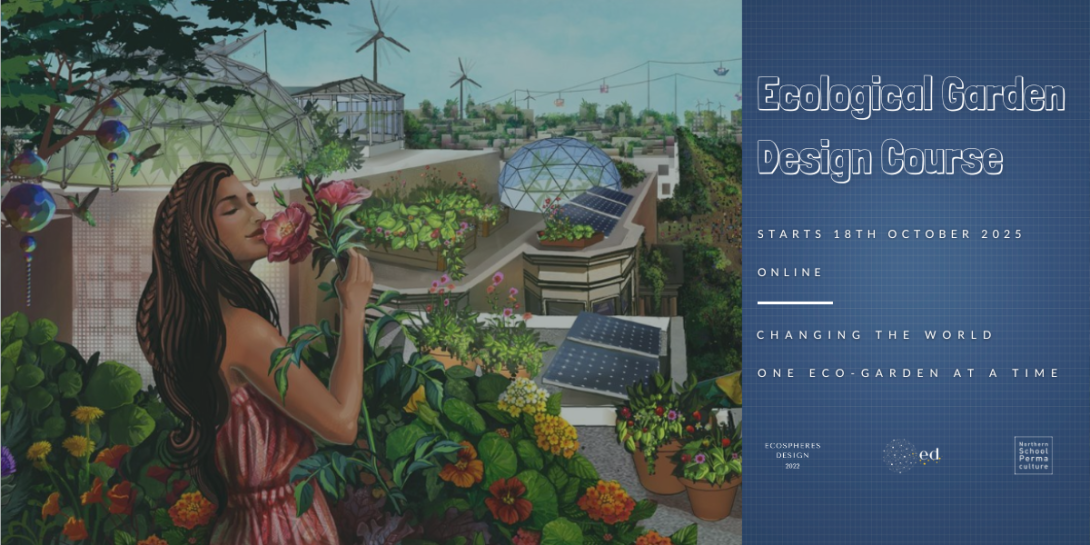
Why Change How We Garden?
Recently, the movement towards sustainable gardening is gaining momentum. However, it still stems from a fragmented approach to garden design. Conventional garden design prioritises style over function and often fails to connect soil, water, and plants into a cohesive pattern. These gardens look good but are high-maintenance, labour-intensive, and costly.
Despite growing public awareness about the need to nurture wildlife and preserve native species, conservation landscapes tend to exclude people or limit their access. Yet, people are also a living part of the landscape and instrumental in ensuring the continuity of rewilding into the future. Without access to natural environments where ecological principles can be observed, it becomes harder to know how to work with these functional patterns in the garden.
Many urban gardeners labour intensively to create green spaces and take on board trending gardening advice. They might introduce a corner for wildlife here, some flower beds at the front garden, a small-scale natural landscape there, and a vegetable patch tucked away at the bottom. This is often done in a higgledy-piggledy manner, resulting in disconnected elements that demand continuous maintenance.
For instance, a corner for wildlife or a semi-wild landscape are laid out to exclude people and can attract undesired visitors to the vegetable-growing patch. A vegetable garden does not offer much habitat to native insects and birds—it actively attempts to keep them out, where they become labelled as pests. The flower garden can attract pollinators but doesn’t produce food or medicine and is often located as far as possible from the vegetable patch.
Better by Design
With some forethought, gardeners can overcome these challenges by design. When gardeners work with ecological principles, they learn to integrate many elements into a functioning, efficient ecosystem that can build soil, harvest water, provide habitats for wildlife, and support high-yielding, mutually beneficial plant communities. One example is the Fallowfield Secret Garden in Manchester, UK. In this inspiring urban project, edible and medicinal planting, composting systems, and wildlife habitat coexist within a small community-led green space.
Imagine the positive impact interlinked urban ecological gardens can have on greening cities and educating people in the future. Humans, through their actions, have triggered a series of environmental crises—but humans are also the solution to those crises, and nature is willing to cooperate.
What is Permaculture Design?
The Ecological Garden Design Course with the Northern School of Permaculture is shaped by the ecological principles used in permaculture design, so the terms permaculture and ecological design are often used interchangeably.
Permaculture is a design approach that mimics natural ecosystems to create self-sustaining landscapes that require minimal external inputs. It aims to work with nature rather than against it, fostering cooperation between all species instead of, for example, using toxic chemicals to eradicate insects or plants perceived as damaging.
In ecological gardens, we learn to use biological processes to keep the garden system in balance. Biological processes are natural cycles—like decomposition, nutrient cycling, pollination, and predator-prey relationships—that drive the fertility and resilience of ecosystems. For example, an ecological garden might use composting and nitrogen-fixing plants instead of relying on synthetic fertilisers to build soil fertility year-round.
We also learn to cultivate high-yield plant communities, which are diverse groupings of plants that grow well together and meet multiple human and ecological needs. A well-designed polyculture of fruit trees, flowering herbs, edible greens, and soil-enriching ground covers can offer food, medicine, habitat, and pollinator support all within one integrated bed.
Ecological Design and Water Harvesting
Water is life—and in ecological garden design, we take great care to harvest and reuse it wisely. Water harvesting strategies depend on the context and scale of your landscape:
In small urban gardens, water butts, mulching, wildlife ponds and planter swales can effectively capture roof runoff.
In suburban settings, rain gardens, ponds and permeable paths direct water where needed.
On large properties, contour swales, ponds, and keyline systems manage flow across the land.
These strategies reduce irrigation needs, prevent runoff, and recharge soil moisture by capturing water close to where it falls and slowing its movement.
How to Begin the Transition to an Ecological Garden
Making the shift doesn’t require starting from scratch. In fact, it begins with observation.
Before making any changes, observe your garden’s sunlight, water flow, and existing plants. What grows well already? Where does water gather? Which parts of the garden feel alive and thriving—and which ones don’t? From there, start to:
Adopt a no-dig approach and add organic matter like compost and mulch to boost soil life.
Group plants in guilds—mini-ecosystems that support each other.
Replace isolated beds with layered planting areas that offer habitat, food, and a weather-resilient gardenscape.
Stop using synthetic chemicals that damage soil microbes and insect populations.
Let your garden evolve, learning from the interactions you observe.
Frequently Asked Questions
What are the first steps to transitioning a conventional garden into an ecological one? Start small: observe your site, stop using chemicals, compost your green waste, and plant native and multipurpose perennials. Build healthy soil and start to reintroduce biodiversity in phases.
How does ecological gardening differ from organic gardening? Organic gardening avoids synthetic chemicals, but ecological gardening goes further: it designs with nature, emphasising interconnectedness, habitat creation, and ecosystem function.
Can this approach be applied in small spaces or balconies? Absolutely. Ecological gardening isn’t about size—it’s about relationships. Even on a balcony, you can use vertical space, grow in guilds, attract pollinators, and compost in small containers.
Next Steps
The Ecological Garden Design Course will introduce you to a step-by-step process for designing your ecological garden—whether you have a small urban balcony, a backyard plot, or access to a shared community site.
You'll learn how to:
Understand your site’s unique conditions
Work with ecological patterns
Apply regenerative techniques that build fertility, resilience and beauty over time
Join us and learn how to design thriving gardens that heal the Earth while feeding the soul.
Places are limited, so enrol in the Ecological Garden Design Course and begin your journey to cultivating a living landscape that works with nature, not against it.
The course starts on October 18th, 2025, and finishes on November 20th, 2027.
